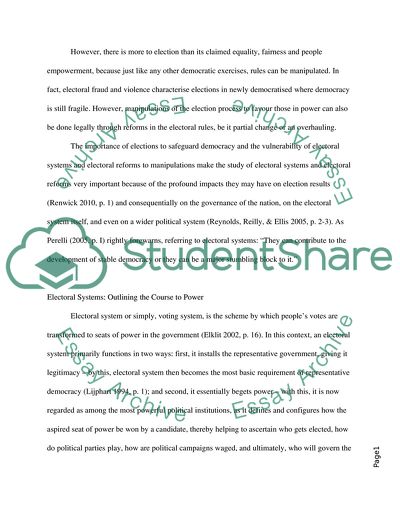Cite this document
(Electoral Reform: Motivations and Implications in the European Context Essay, n.d.)
Electoral Reform: Motivations and Implications in the European Context Essay. Retrieved from https://studentshare.org/politics/1734553-using-appropriate-european-examples-discuss-the-motivations-and-implications-of-electoral-reform
Electoral Reform: Motivations and Implications in the European Context Essay. Retrieved from https://studentshare.org/politics/1734553-using-appropriate-european-examples-discuss-the-motivations-and-implications-of-electoral-reform
(Electoral Reform: Motivations and Implications in the European Context Essay)
Electoral Reform: Motivations and Implications in the European Context Essay. https://studentshare.org/politics/1734553-using-appropriate-european-examples-discuss-the-motivations-and-implications-of-electoral-reform.
Electoral Reform: Motivations and Implications in the European Context Essay. https://studentshare.org/politics/1734553-using-appropriate-european-examples-discuss-the-motivations-and-implications-of-electoral-reform.
“Electoral Reform: Motivations and Implications in the European Context Essay”, n.d. https://studentshare.org/politics/1734553-using-appropriate-european-examples-discuss-the-motivations-and-implications-of-electoral-reform.


